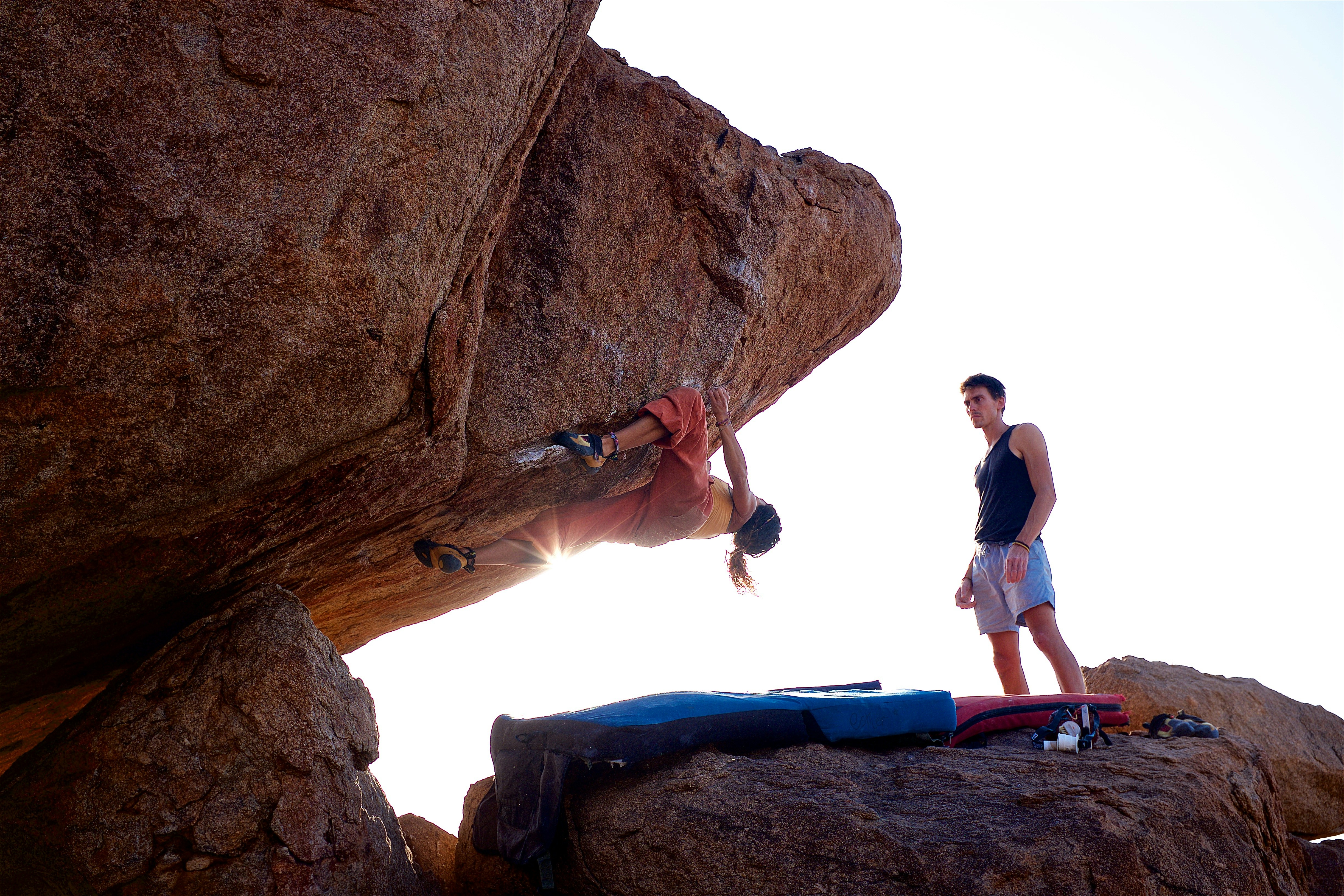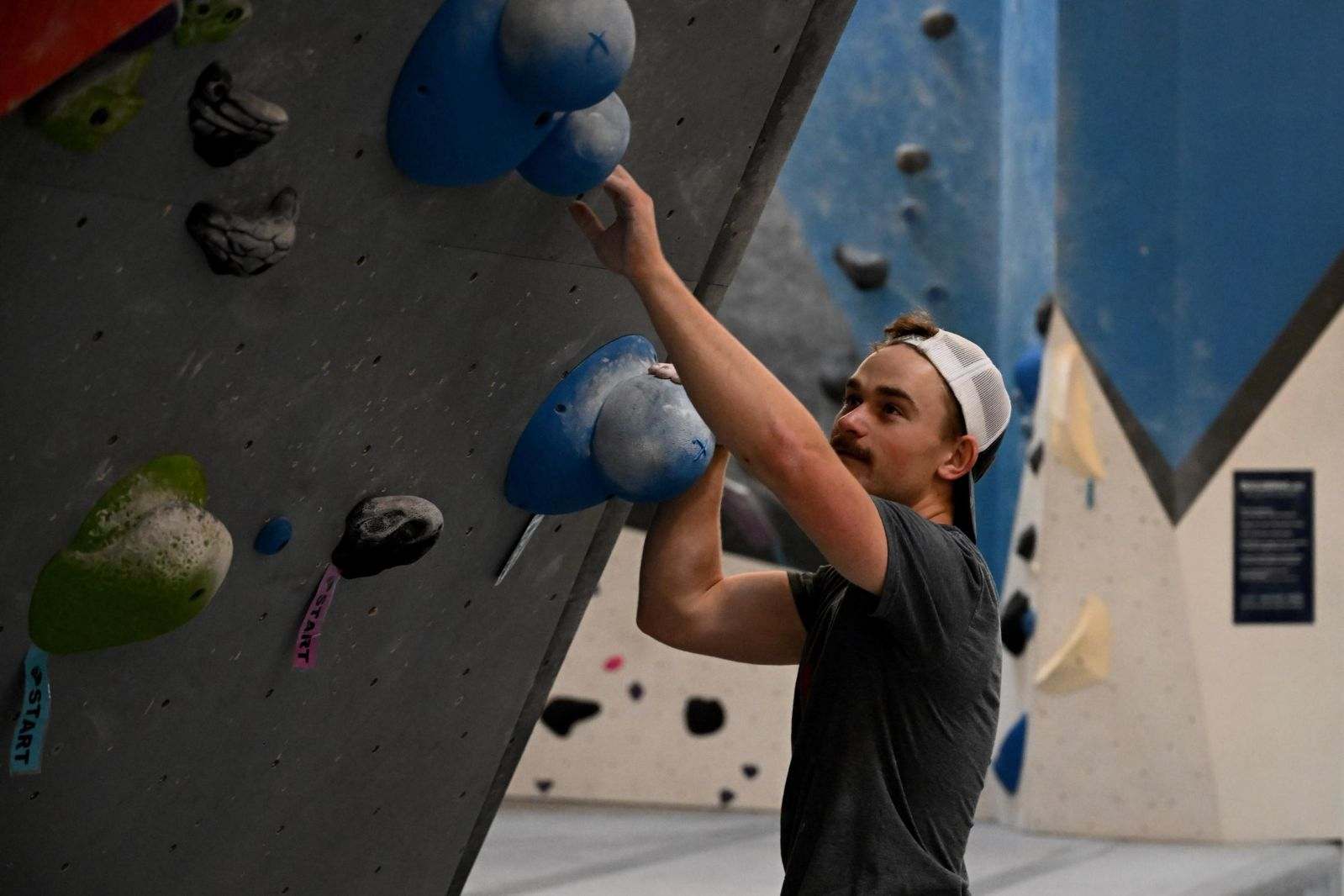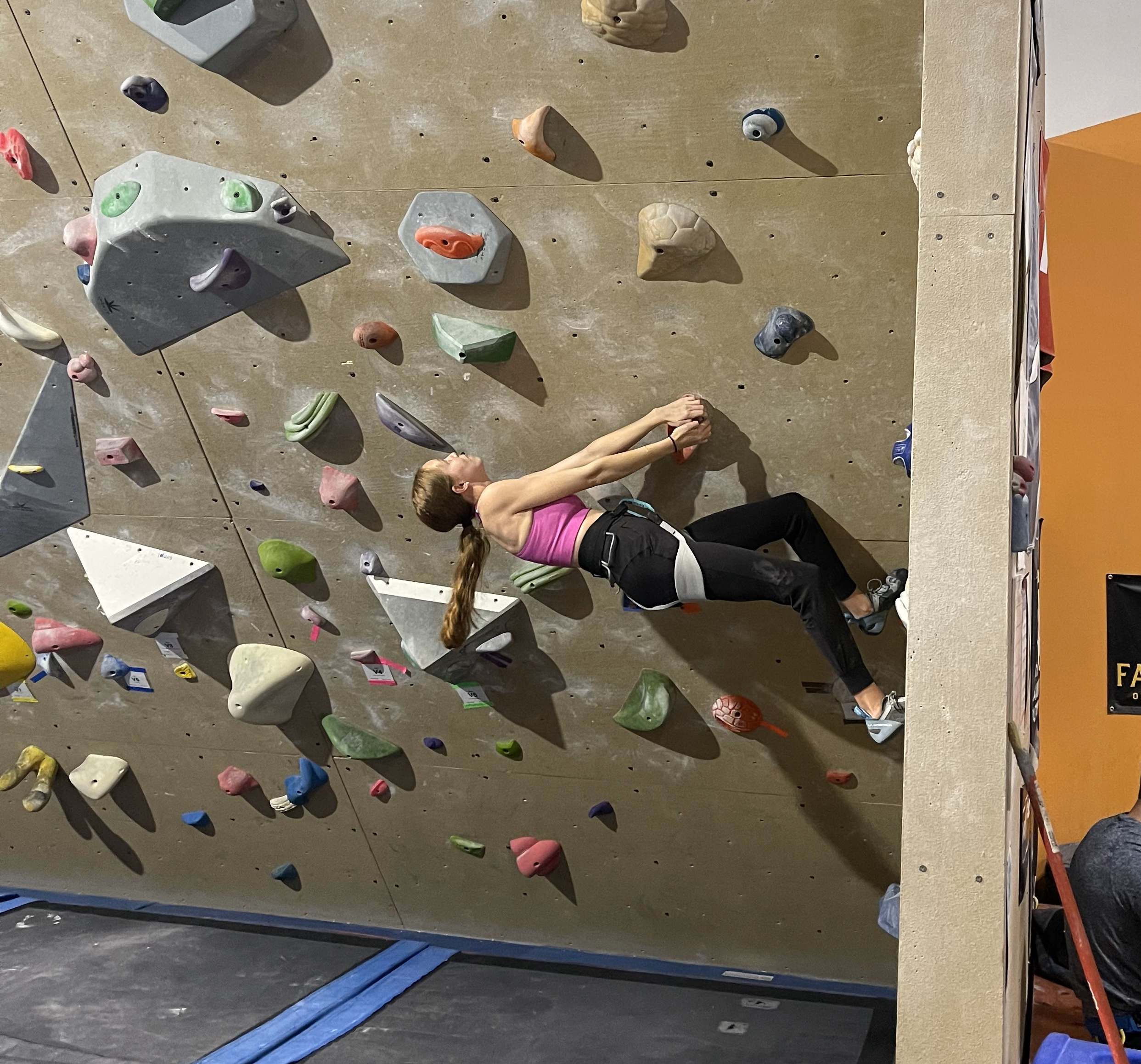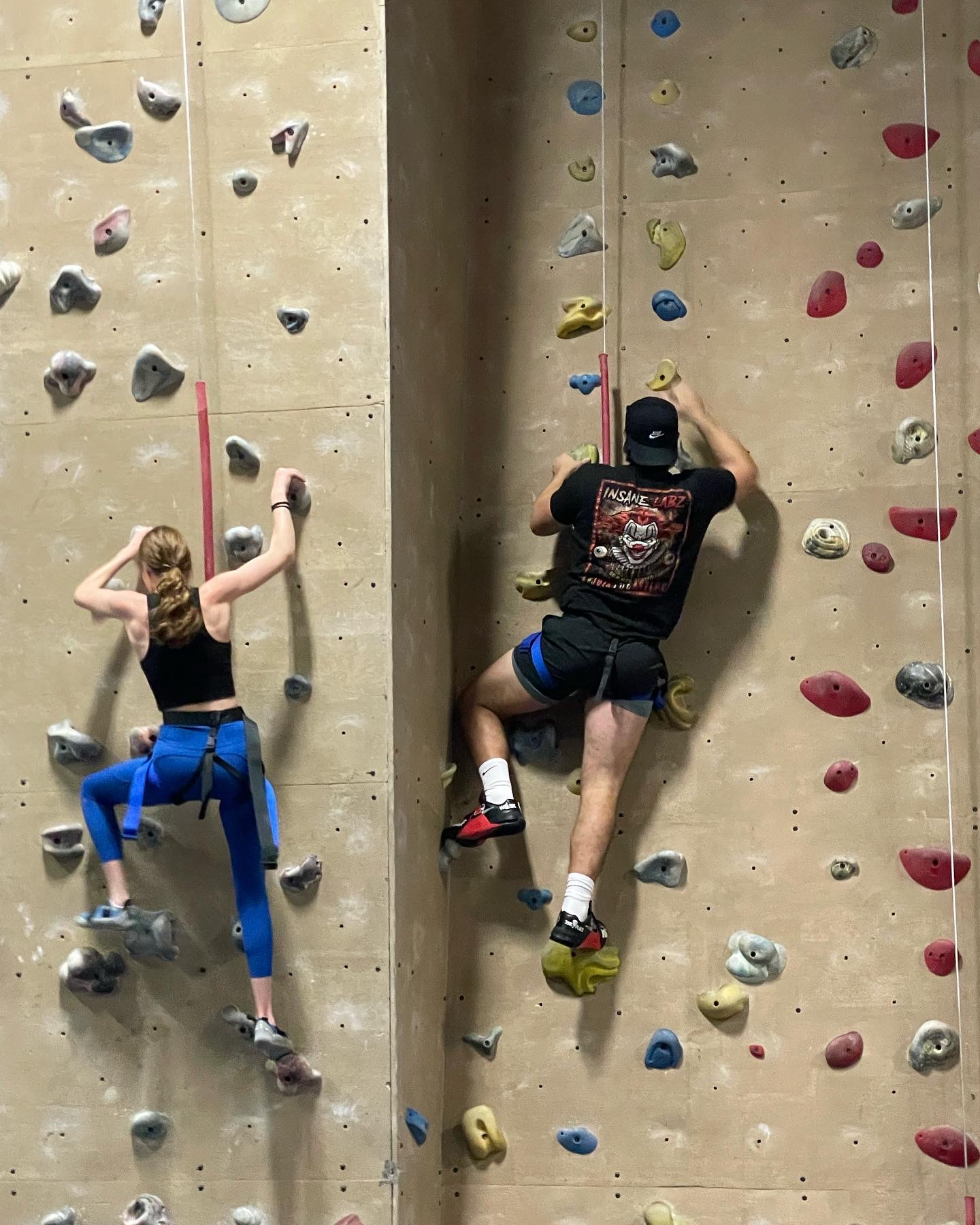Climbing Terminology
Wether you're a seasoned climber or just starting out, understanding the jargon is essential for effective communication and a smoother climbing experience.
Below you will learn about types of climbing, the types of walls and holds, essential movements, and key commmuncation terms used within the climbing community.
Familiarizing yourself with these terms will not only enhance your understanding of the sport but also help you connect with fellow climbers, fostering a supportive
and inclusive community as well as help keep you safe. Let's elevate your climbing vocabulary and climbing experience!.
Types of Climbing

Bouldering
Unropeded climbing on small, low-hanging boulders or climbing typically 10 - 25 feet tall.
Safety: You usually do not wear helments or harnesses but instead use a crash pad and spotters for
soft, safe landings.

Lead Climbing
Assissted climbing where the climber places anchors (trad) or clip into pre-placed bolts (sport)
in the rock face as they climb up.
Safety: Ropes, harness, belay devices, pre-placed bolt or anchor points

Free Climbing
Unassisted climbing up face of rock wall.
Forms: Free soloing, top roping, lead climbing, bouldering
Safety: Free soloing has no saftey equipment. Other forms of free climibing
may include ropes and harnesses for protection.

Top Roping
Assisted climbing where a climber is hooked into a belay system with
a pre-constructed top anchor and a belayer.
Lowest risk
Safety: Ropes, harness, belay devices
Types of Climbing Holds & Walls
Jug: a big, open hold that your entire hand can hold
Sloper: a rounded holds with no edge to grip
Crimp: a small ledge where you can only place your finger tips on it
Pinch: a hold you have to have your thumb on one side and your fingers on the other side
Pocket: a small hold on a wall that you hook a couple of fingers into
Undercling: a hold that opens facing down
Volume: a polygon shaped features on the wall that extend the climbing wall and other holds may be placed on


Slab: a slightly less than vertical wall
Overhang: a rock face at an angle greater than 90 degrees
Dihedral: an inside corner of a rock wall
Spray: a wall with a mix of holds with no set routes
Crag: a small rock climbing area
Crack: a long split in the wall
Problem: a climbing path on a boulder with start and finish points
Route: the path a climber takes
Crux: the hardest section of a route
Traverse: a climb horizontally across a rock face
Grading Stystem: tells the difficulty of a route and typically gets exponentially more difficulty as grades get higher
Top-Out: a finish on top of the boulder standing up
Types of Movements
Heel Hook: put your heel on the hold
Toe Hook: put the top of your shoe on the hold
Smear: stand on the physical wall face when there is no edge
Flag: put one foot out to side of wall
Gaston: use arms and palms to push outwards on holds
Drop Knee: drop your knee down with your foot on a hold
Fist/Hand Jam: place fist/hand in crack to fill space
Knee Bar: place your foot on a foot hold and hook your knee behind an edge or hold
Static: slow and controlled movements up a rock wall
Dynamic: fast movements that extend the climbers reach such as dynos
Dyno: a jump from one hold to another
Flash: completion of a route on the first try
Project: a climbing route that a climber works on over a period of time
Send: completion of a route
